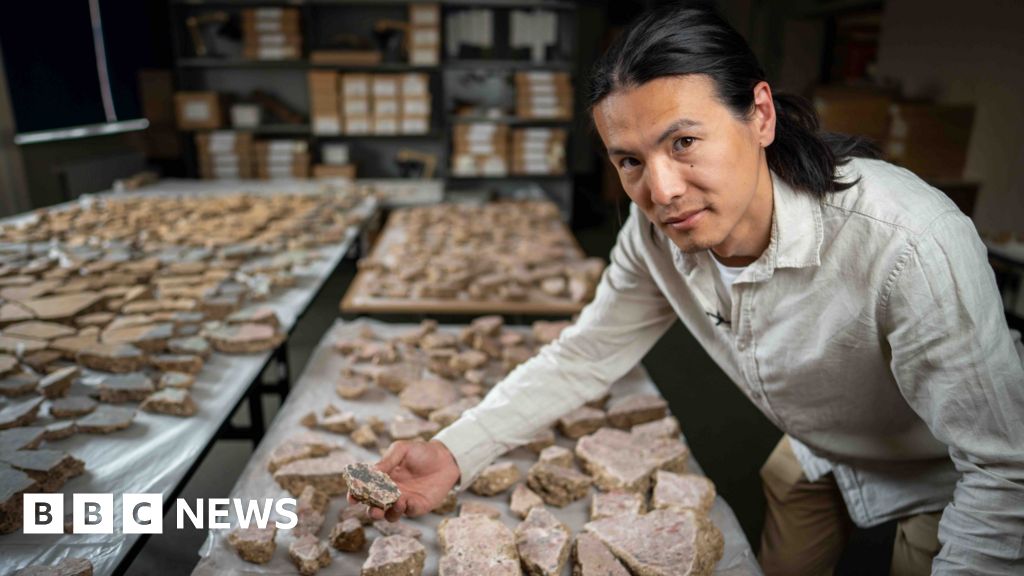Archaeologists have pieced together thousands of fragments of 2,000-year-old wall plaster to reveal remarkable frescoes that decorated a luxurious Roman villa. The shattered plaster was discovered in 2021 at a site in Central London that’s being redeveloped, but it’s taken until now to reconstruct this colossal jigsaw puzzle.
The frescoes are from at least 20 walls of the building, with beautifully painted details of musical instruments, birds, flowers and fruit. The art is revealing more about the affluence of the area where they were found – described by the team as the “Beverly Hills of Roman London”.
There are also clues about who the artists were: one fragment is scored with the Latin word Fecit, which means “has made this” – but the piece where the name should be is missing. The Museum of London Archaeology (Mola) team still hope the vital piece will be found as they sift through the fragments.
The largest of the frescoes, measuring about 5m by 3m, has a lower section of pale pink, dotted with specks of paint to imitate marble. Above are rich yellow panels with soft green borders. The wall paintings are adorned with candelabras, stringed instruments called lyres, white cranes and a delicate daisy.
There’s also what appears to be a bunch of grapes, but archaeobotanists believe that this is a plant that grows locally – mistletoe. The artists’ exact identity however will remain elusive until the missing fragment bearing their names is found.
The Romans founded London in AD43, and the villa was built soon after, dating to the first or second century when the new city was growing rapidly. The archaeologists think this grand building may have been home to a wealthy family or a hotel for rich travellers passing through Londinium.
They’ve been comparing the frescoes to others found across Britain and Europe, and they believe they were created by a group of highly skilled painters who travelled the Roman empire. The plaster was found in Southwark, just south of the Thames, where a stunning mosaic and Roman cemetery were also unearthed at the site, which was being excavated in preparation for a new development.
This location, outside of the central hub of Roman London, is also revealing more about how the city was spreading out. There was this thriving, bustling settlement quite early on in the Roman period, and it’s almost the kind of wealthy suburb – the Beverly Hills of Roman London. And what this shows is that the Romans are committing to London, they’re investing in London, and they’re seeing it as a place to settle in, a place to stay.
There’s still much to discover from the fresco fragments, helping archaeologists reconstruct the story of the UK’s rich Roman history.
Source link




